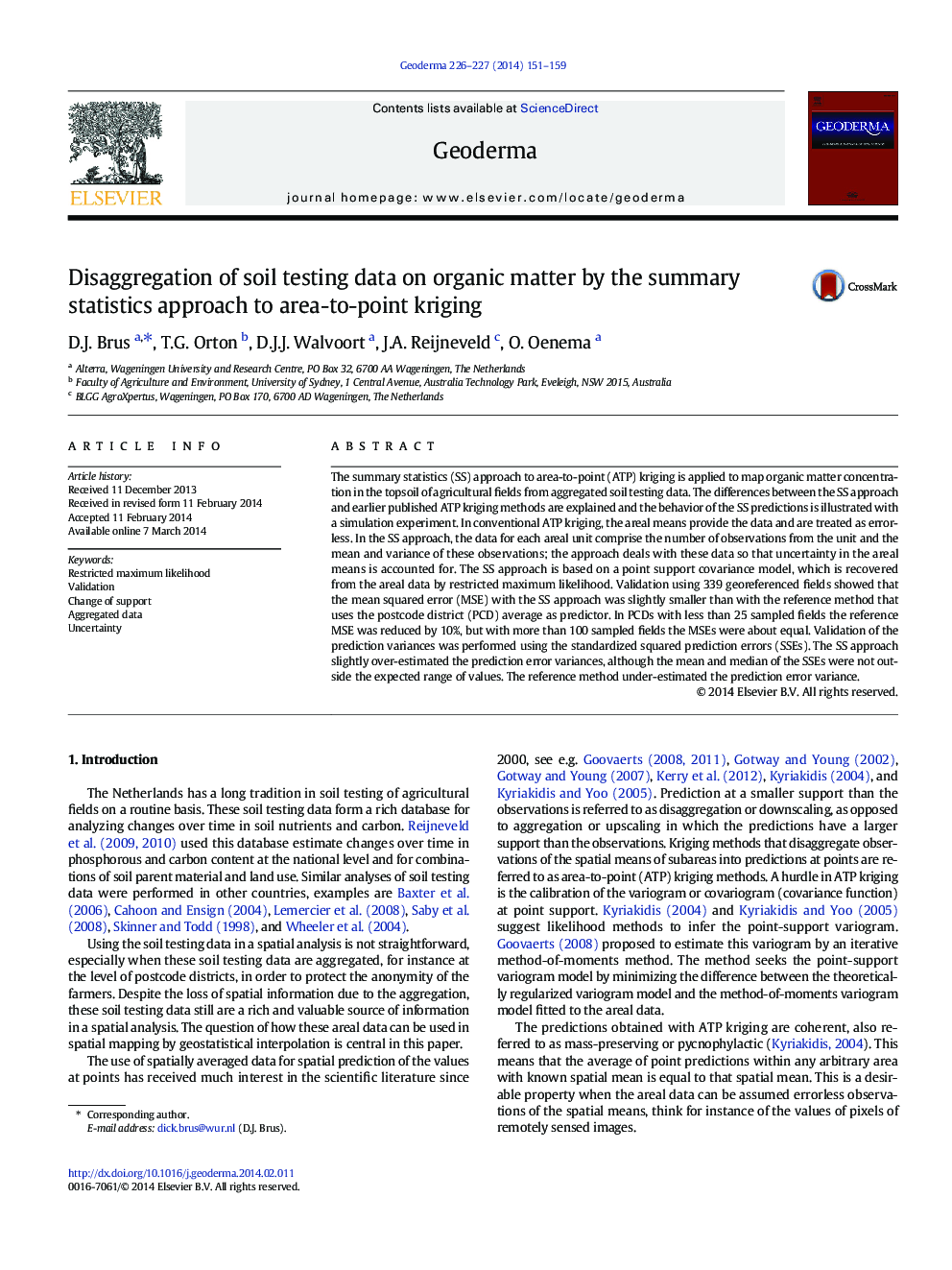| Article ID | Journal | Published Year | Pages | File Type |
|---|---|---|---|---|
| 6408857 | Geoderma | 2014 | 9 Pages |
â¢The SS approach accounts for uncertainty in areal means of soil testing data.â¢Predictions of SOM are validated at field support, which has not been done before.â¢Only with small sample sizes the SS approach outperforms the reference method.
The summary statistics (SS) approach to area-to-point (ATP) kriging is applied to map organic matter concentration in the topsoil of agricultural fields from aggregated soil testing data. The differences between the SS approach and earlier published ATP kriging methods are explained and the behavior of the SS predictions is illustrated with a simulation experiment. In conventional ATP kriging, the areal means provide the data and are treated as errorless. In the SS approach, the data for each areal unit comprise the number of observations from the unit and the mean and variance of these observations; the approach deals with these data so that uncertainty in the areal means is accounted for. The SS approach is based on a point support covariance model, which is recovered from the areal data by restricted maximum likelihood. Validation using 339 georeferenced fields showed that the mean squared error (MSE) with the SS approach was slightly smaller than with the reference method that uses the postcode district (PCD) average as predictor. In PCDs with less than 25 sampled fields the reference MSE was reduced by 10%, but with more than 100 sampled fields the MSEs were about equal. Validation of the prediction variances was performed using the standardized squared prediction errors (SSEs). The SS approach slightly over-estimated the prediction error variances, although the mean and median of the SSEs were not outside the expected range of values. The reference method under-estimated the prediction error variance.
